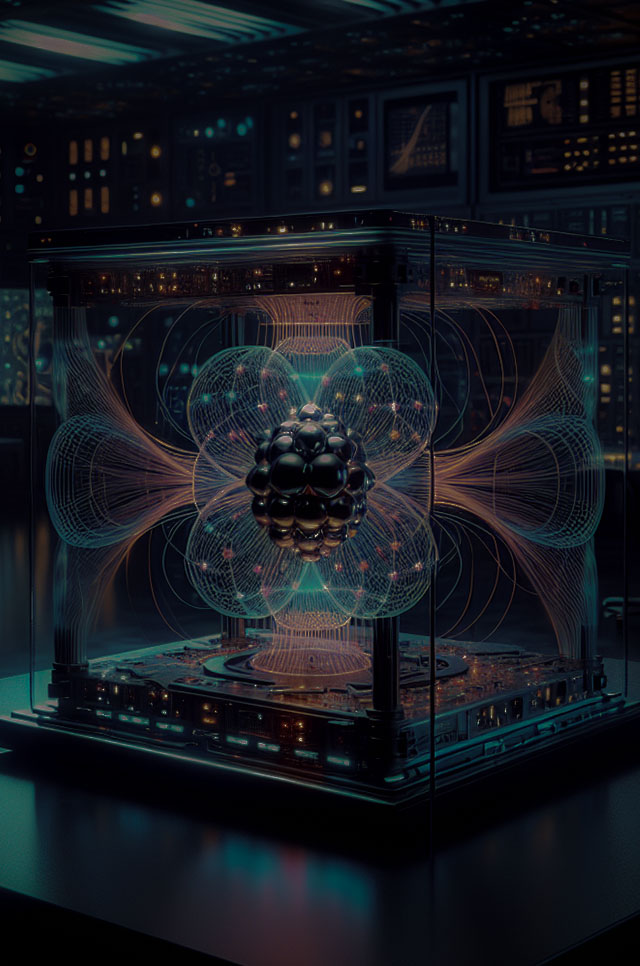Quantum computing leverages the principles of quantum mechanics to process information using quantum bits, or qubits, which can exist in multiple states simultaneously. Unlike classical bits, which can only be 0 or 1, qubits exploit phenomena like superposition and entanglement, enabling quantum computers to perform complex calculations at unparalleled speeds and potentially solve problems that are intractable for classical computers.
Key Differences Between Classical and Quantum Computing
Units of Data: Bits vs. Qubits
- Classical Computing:Classical computers process data using bits, which can be either 0 or 1. Bits form the foundation of binary code, enabling serial and parallel processing. Classical computers execute tasks in a deterministic manner, meaning the same input always yields the same output.
- Quantum Computing:Quantum computers use qubits, which can be 0, 1, or both simultaneously due to superposition. This quality empowers quantum computers to achieve significantly faster processing of complex computations than classical computers. Additionally, qubits can become entangled, meaning the state of one qubit can instantly influence another, regardless of distance, facilitating faster information transfer.
Computational Power
- Classical Computing: The computational power of classical computers increases linearly with the number of transistors. Classical processors handle computations sequentially, even when utilizing parallel processing.
- Quantum Computing: Quantum computing power scales exponentially with the number of qubits. This exponential growth arises from the superposition and entanglement of qubits, allowing quantum computers to solve problems that are intractable for classical computers.
Operating Environments
- Classical Computing: Classical computers operate effectively in typical environments, such as homes, offices, and data centers. They function well within a range of standard temperatures and conditions, making them versatile for everyday use.
- Quantum Computing: Quantum computers require highly controlled environments, often near absolute zero temperatures, to maintain qubit stability. These stringent conditions prevent quantum decoherence, where qubits lose their quantum state due to environmental interference.
Infrastructure Requirements
Organizations interested in integrating quantum computing must consider substantial changes in their infrastructure. Quantum computers demand specific physical space, cooling systems, and specialized maintenance, all of which require significant investment.
Classical vs. Quantum Computing: A Comparative Summary
| Aspect | Classical Computing | Quantum Computing |
| Data Units | Bits (0 or 1) | Qubits (0, 1, or both simultaneously) |
| Computation Basis | Binary processing | Quantum mechanics (superposition, entanglement) |
| Processing Power | Increases linearly with transistors | Increases exponentially with qubits |
| Environmental Needs | Standard, room temperature | Controlled, near absolute zero |
| Error Rates | Low error rates, robust error correction | Higher error rates, complex error correction |
| Development Stage | Mature, well-established | Emerging, in early development |
| Cost and Accessibility | Cost-effective, widely accessible | Expensive, limited to specialized institutions |
| Applications | General-purpose computing | Specialized tasks (e.g., cryptography, optimization) |
Conclusion
Both classical and quantum computing have their unique strengths and applications. While classical computing remains efficient for a broad range of tasks, quantum computing offers unprecedented speed and capability for specific complex problems. As quantum technology advances, it will complement rather than replace classical computing, providing new solutions and driving progress in various fields. Preparing for this future involves understanding both the potential and the limitations of quantum computing, ensuring readiness for its eventual mainstream integration.


Well Explained